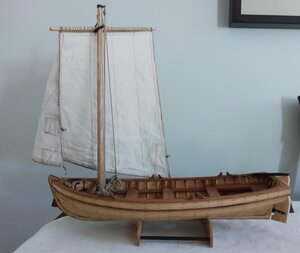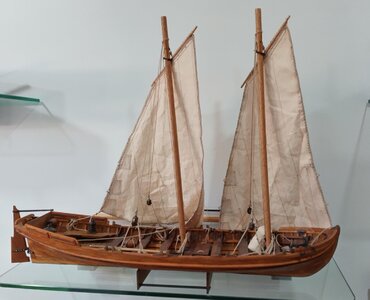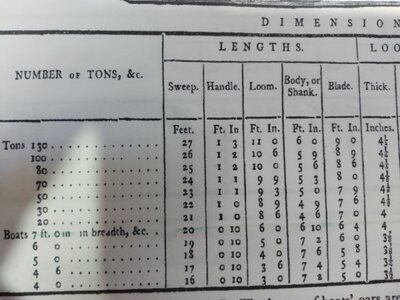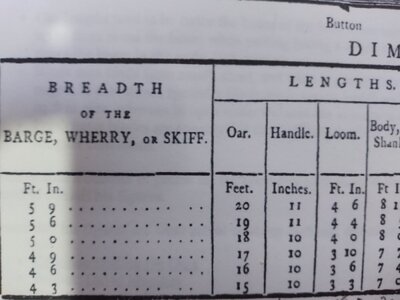Hello members and guests. This is the 1st time I've posted and have a few questions to ask of all of you knowledgeable people.
I have built a number of ships boats based on the plans from Harold and Underhill, for Man-of-war boats. Circa 1800s. I have attached a picture of a dinghy and a pinnace I recently competed.
I have two questions for all of the experts out there.
On the plans they show that the various boats can be either sailed or rowed. The plans do not show any details on how or where you would fasten the running lines and fixed stays for the rigging. I.e. no cleats or other fixed fastening devices apart from the mast steps. I purchased the book the “Boats of Men-of-War” by W. E. May and there doesn’t seem to be any mention of the method attaching fixed or running rigging of sails in any form.
Question 1; Would they have just attached ropes to the thwarts or other convenient openings on the structure of the boats? Or would cleats have been added based on the preferred sails used? Not having done any sailing whatsoever I’m stumped.
Question 2: Oars. Again the plans are silent on oars that would have been used. I have based the dimensions of oars on the “The art of making masts, yards gaffs etc. and oars”, 1797, by David Steel. Based on the dimensions from this book the oars tend (to my untrained eye) to be extraordinarily long compared to the boat they are used on.
Any assistance would be greatly appreciated
Regards
Rick


I have built a number of ships boats based on the plans from Harold and Underhill, for Man-of-war boats. Circa 1800s. I have attached a picture of a dinghy and a pinnace I recently competed.
I have two questions for all of the experts out there.
On the plans they show that the various boats can be either sailed or rowed. The plans do not show any details on how or where you would fasten the running lines and fixed stays for the rigging. I.e. no cleats or other fixed fastening devices apart from the mast steps. I purchased the book the “Boats of Men-of-War” by W. E. May and there doesn’t seem to be any mention of the method attaching fixed or running rigging of sails in any form.
Question 1; Would they have just attached ropes to the thwarts or other convenient openings on the structure of the boats? Or would cleats have been added based on the preferred sails used? Not having done any sailing whatsoever I’m stumped.
Question 2: Oars. Again the plans are silent on oars that would have been used. I have based the dimensions of oars on the “The art of making masts, yards gaffs etc. and oars”, 1797, by David Steel. Based on the dimensions from this book the oars tend (to my untrained eye) to be extraordinarily long compared to the boat they are used on.
Any assistance would be greatly appreciated
Regards
Rick








